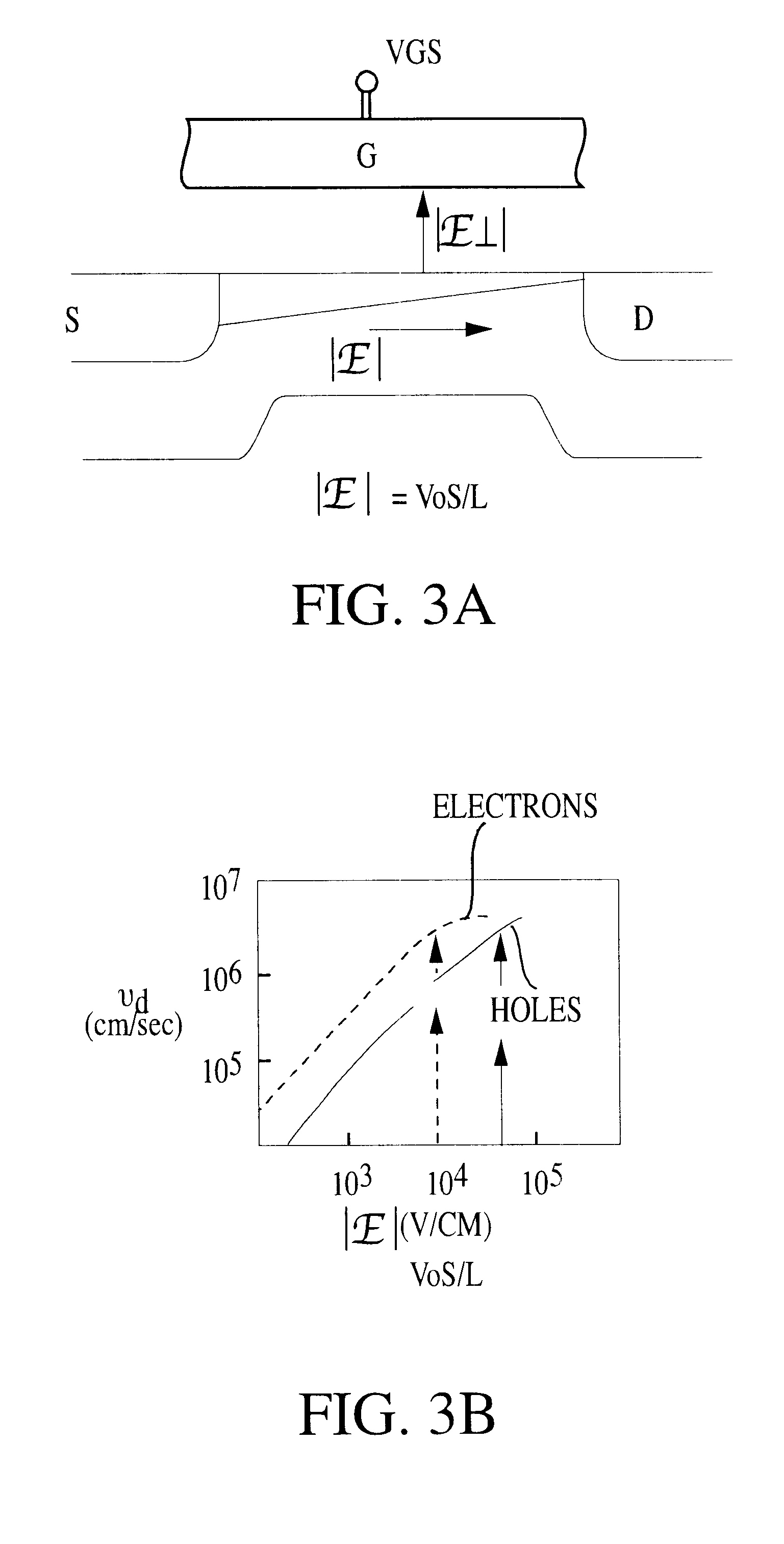Method for fabricating CMOS transistors having matching characteristics and apparatus formed thereby
a technology of cmos transistor and matching characteristics, which is applied in the direction of electrical equipment, basic electric elements, and semiconductor devices, etc., can solve the problems of excessive power dissipation, more difficult control of active and parasitic device threshold voltage, and improve the pull-up switching speed self-defea
- Summary
- Abstract
- Description
- Claims
- Application Information
AI Technical Summary
Problems solved by technology
Method used
Image
Examples
Embodiment Construction
Illustrative embodiments and exemplary applications will now be described with reference to the accompanying drawings.
FIG. 5 illustrates the electron mobility of (111) silicon surfaces while FIG. 6 illustrates the hole mobility of (111) silicon surfaces, both under typical vertical electric fields due to the gate bias. The electron mobility is around 300 cm.sup.2 / V sec, which while lower than that on (100) surfaces, is still high enough to ensure velocity saturation on deep sub-micron devices, which might typically have drain to source electric fields of 1 V over 0.1 microns or 10.sup.5 V / cm. As shown in FIG. 5, inversion layer hole mobility can be 80% or higher on the (111) silicon surfaces, nearly 200 cm.sup.2 / V sec, than on the (100) surfaces. In the typical operating region, velocity saturation of holes will also occur for PMOS devices operated in the deep sub-micron region. Typical source-drain fields of 10.sup.5 V / cm and a mobility of 200 cm.sup.2 / Vsec will result in veloci...
PUM
 Login to View More
Login to View More Abstract
Description
Claims
Application Information
 Login to View More
Login to View More - Generate Ideas
- Intellectual Property
- Life Sciences
- Materials
- Tech Scout
- Unparalleled Data Quality
- Higher Quality Content
- 60% Fewer Hallucinations
Browse by: Latest US Patents, China's latest patents, Technical Efficacy Thesaurus, Application Domain, Technology Topic, Popular Technical Reports.
© 2025 PatSnap. All rights reserved.Legal|Privacy policy|Modern Slavery Act Transparency Statement|Sitemap|About US| Contact US: help@patsnap.com



